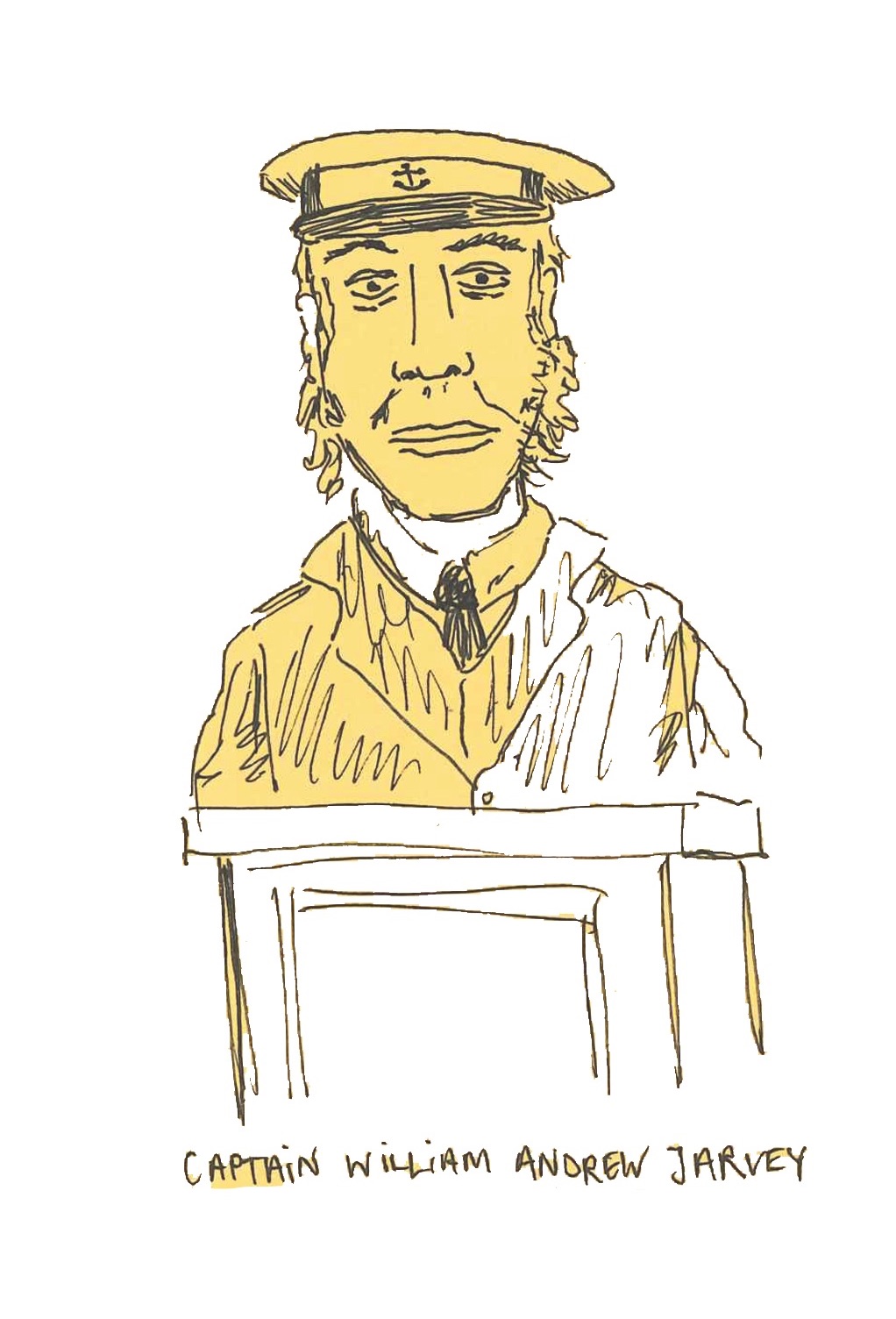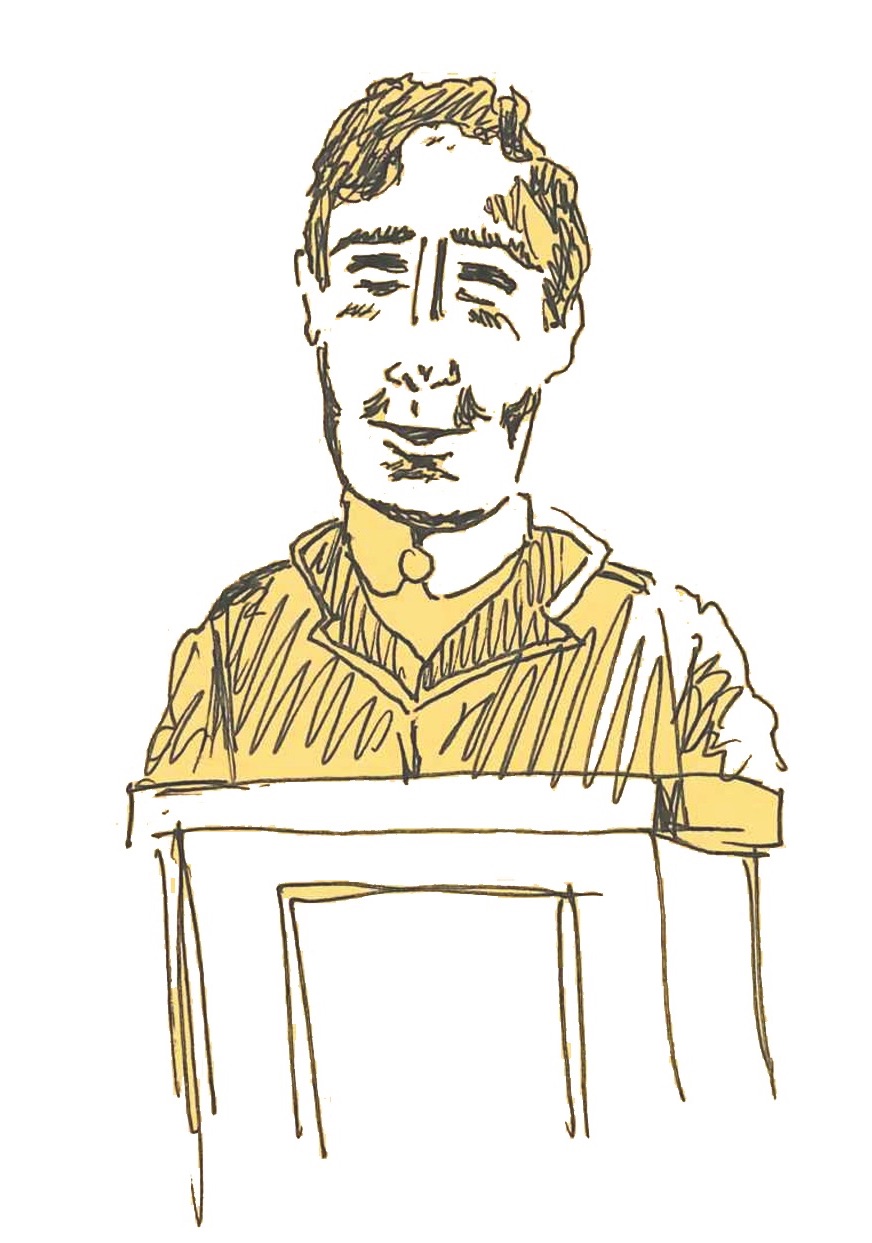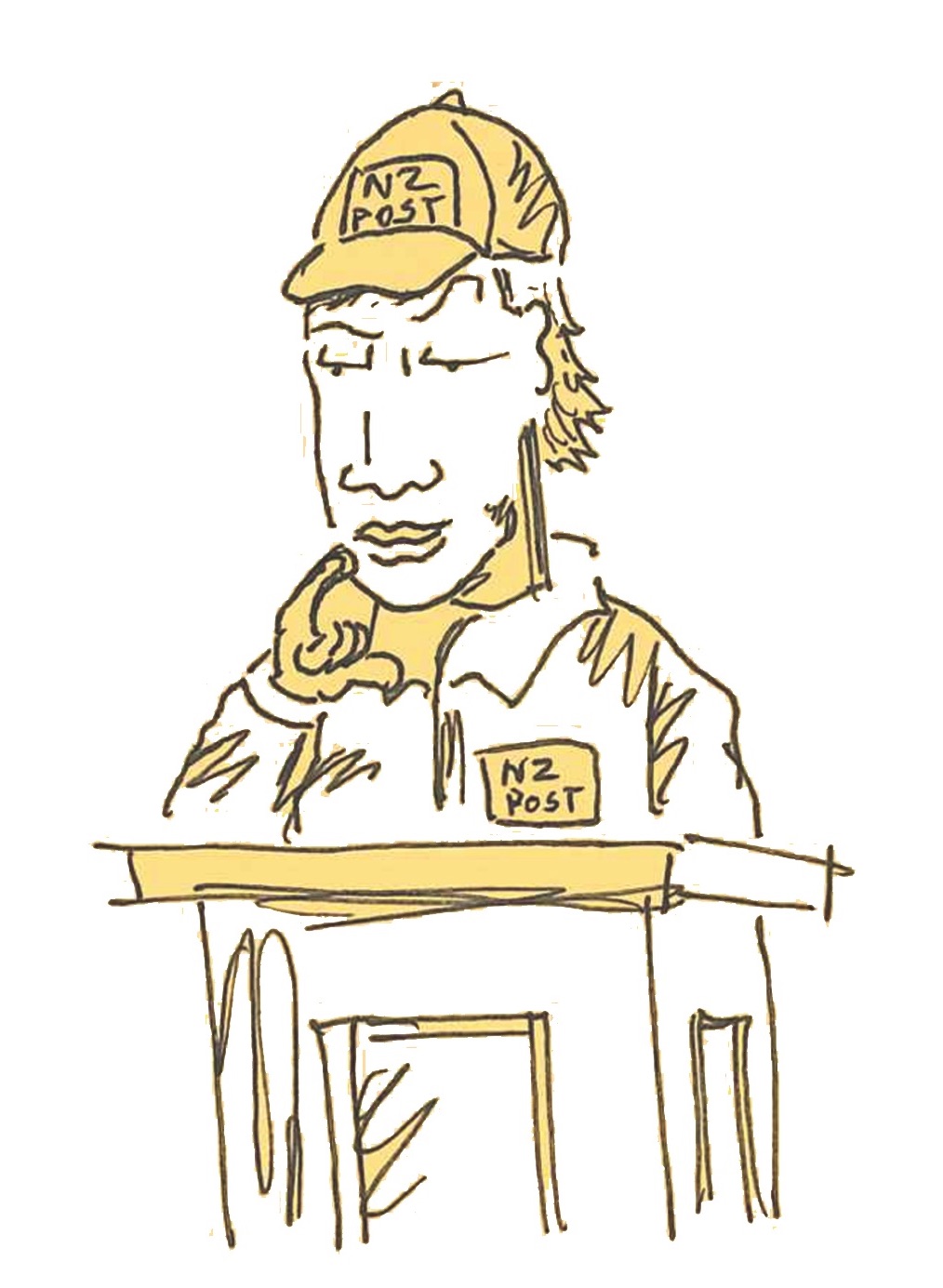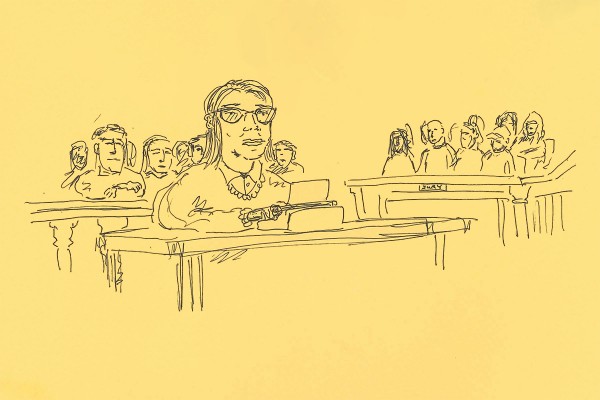CW: murder, suicide, executions, poison
The skyrocketing price of alcohol and the fact that McDonald’s doesn’t do hash browns past 11am both feel like terrible crimes, but these are only a smidgen of Dunedin’s illustrious true crime history. True crime fascination is not a new fad, as you’ll see; it has constantly dominated the headlines and gossip circles of every corner of society since forever. And Dunedin, as it turns out, has the OG Unabomber, a potential Royal assassin, and, of course, a murder of Every Street in Dunedin. But we skipped that one because you probably know enough about it already.

1864: Fit checks & toxic vibes
Captain William Andrew Jarvey was a well-known skipper who was “very much liked, especially by the lady passengers,” according to articles in Poverty Bay Herald. William isn’t remembered for that, though, because much like other handsome womanisers of history, William was a brutal criminal. He murdered his pregnant wife Catherine Jarvey in plain sight of his teenage daughter. His trial also contributed to the death of Dr. John Macadam, an Analytical Chemist (AnalChem) for the Government of Victoria who had sailed over specifically to testify for this trial. The Otago Witness detailed the court case, in which Jarvey’s method of strychnine poisoning went initially unnoticed as Jarvey blamed Catherine’s death on ‘fits’, which is a half-truth Pinocchio would have been proud of. The bitter strychnine causes spasms and continuous convulsions, and the poison would have caused Catherine a great deal of dramatic and excruciating pain in the form of these fits. William had sourced the poison through his work on boats, requesting it for rat extermination on ships. The OG RAT test.
Another reason for the delayed trial was that the key witness, 15-year-old Elizabeth Jarvey, didn’t come forward until the 31st of December – roughly three months after the crime. Her testimony said that the evening William poisoned Catherine, Elizabeth saw it all, and was told directly by her mother: “It is no use, Lizzie, I am poisoned. Your father has poisoned me for the woman with the big hat and cloak.” Although initially uneasy, the arrival of this woman, Margaret Little, would be the push Elizabeth needed to come forward and accuse her father. Catherine’s body was exhumed, after which Dr. John Macadam would detect the strychnine present. Unfortunately, Macadam had a poor showing in the witness stand, and William landed a retrial. Dr. Macadam was incredibly stressed at this prospect, working so obsessively on the trial and evidence that on the trip back to New Zealand for the second trial, with his assistant James Kirkland, Dr. Macadam died of “excessive debility and general exhaustion.” Oof, but same. Luckily, Kirkland came in clutch and delivered the testimony that led a jury to find Jarvey guilty after just four hours. William Jarvey would become one of New Zealand’s 83 total executed convicts on the 24th of October 1865 at Dunedin Gaol, which now offers cute tours. As recorded in the Timaru Herald by a particularly descriptive writer: “After a few seconds had passed the hands were twice slightly raised, with a sharp convulsive movement. Then there were several movements of the throat and chest, and later a tremor ran through the body.” Just like Catherine, the shakes that wracked his body would be the last sensation William knew.

1909: Gaslight, Gatekeep, Girlboss: Amy Bock
When you look up ‘girlboss’ in the dictionary, there’s a picture of Amy Bock. Or maybe one of her many aliases. As Amy Chanel, she earned a three-year sentence for altering cheques, and she used Molly Shannon to borrow hefty amounts of cash to buy a poultry farm, landing her two years. Agnes Vallance was the name Amy used to steal and pawn an employer's furniture, and in a Scooby-Doo moment she managed to go bush after citing letters from a concerned friend “Charlotte Skevington” – but again, Amy played all the parts. But although her work as Amy, Agnes, Molly, Charlotte and all the other scams would position her as a prolific career criminal, it was her scheme as Percy Redwood and the 1909 Dunedin trial that would make her infamous.
Percival ‘Percy’ Redwood was a handsome young man, the son of a wealthy widow and nephew to an archbishop (Amy’s disguise as Percy was honestly immaculate, but we couldn’t include it because of copyright). Through increasingly complicated schemes, Amy financed her cover as Percy through postal orders and letters to lawyers, asking for small personal loans that the residents of Dunedin fell over themselves to give (because just like today, people are desperate to give mediocre white men money). This allowed Amy to pay her landlady and court her daughter Agnes Ottaway, and the two would be engaged a few weeks later. The elaborate wedding would mark the beginning of the end for Percy, as the night of their nuptials Agnes became suspicious when Percy went to bed fully clothed. A couple days later Amy was arrested at the Ottaway’s boarding house. Her trial in Dunedin on the charges of false pretences and forgery would lead to Amy being the first woman in New Zealand to be labelled a habitual criminal, and the trial would thrill the country. The fact that Amy usually gave away most of her stolen money and that the stolen sums were never “outrageous” earned Amy a large amount of public sympathy and fascination. But nonetheless, her lack of track-covering netted her over 16 years in prison for various crimes. Even after serving her years in prison, Amy would continue her life of trickery and deception until her death in 1943. Pour one out for a real one.

1962: The Dunedin parcel-bomb murder
Solicitor James Ward truly did have the worst day at the office on February 5th, 1962. In the first New Zealand case of murder via explosives, Ward opened a package addressed to him sent through the Dunedin postal system to his Stewart Street office. The package was labelled ‘personal’ so Ward’s partner, Toomey, moved the package into Ward’s office for the man to open. A few minutes later, the four-story office shook as the enclosed bomb detonated and critically injured Ward, who would die of his injuries in the hospital. The country was outraged, with Superintendent of the Police in Dunedin J. C. Fletcher stating “This is one of the most callous murders in the history of New Zealand…..it seems a crime not without motive, and I would be surprised if it was the work of a crank.”
The manhunt for the culprit was intense, with newspapers constantly updating on the hunt and all the resources utilised. In 1962, Canterbury newspapers reported on the special homicide squad set up specifically to hunt the ‘bomb killer’ and the varying experts on fingerprinting and explosions drawn into the investigation. It was deduced that the bomb was made by someone with a level of knowledge regarding explosives and electricity, and that the detonator used was electric (in 1962!), creating an instantaneous explosion. The victim would have had no time to react or even recognise what danger they held in their hands before it exploded. Despite these efforts, no motives were found, no suspects were named, and no one was held responsible for the grisly murder. In the past few years, however, a prime suspect has been named: John Woods, Ward’s brother-in-law. Woods has since passed, and the police at the time never had enough evidence to convict him. Woods was furious about his family’s continued interaction with his ex-wife, and family members revealed that Woods launched several threats against Ward and his son in the weeks leading up to the bombing. Woods was a decorated soldier in WW2 and had explosives knowledge as a result. But again, Woods furiously denied any involvement, and there wasn’t enough physical evidence. The bombing of James Ward is still an open case and remains officially unsolved to this day.

1981: Queen Lizzie Escapes Death
Christopher John Lewis was a Dunedin local and had been on the wrong side of the law since he was expelled from kindergarten, according to his own memoirs. Arson, burglaries, sticking pins into kittens and vandalism would all lead up to October 14th, 1981, where, at age 17, he would attempt to assassinate the Queen. Lizzy and Phillip were walking around the Octagon during their royal tour, with security tighter than a straight man’s butthole due to the Springbok Protests finishing only a month beforehand. As the pair arrived at the Otago Museum Reserve to start the procession, there was the unmistakable pang of a gunshot, immediately identified by police and spectators.
However, the press would publish police statements stating that the noise was just a council sign falling over, and members of the crowd were told it was an engine backfiring. An investigation of a totally-unrelated robbery would lead straight to Lewis’s Albany Street residence. In the home, there were newspaper clippings of the Royal Family and hand-drawn maps of the Octagon. Facing a potential death penalty for treason, Lewis claimed he had been ordered to do so by a right-wing terrorist called ‘Snowman’ and an associate ‘Polar Bear,’ and it was their idea to begin with. He then later admitted they were not real people (but it sounds like he would’ve gotten along real well with Amy Bock).
Lewis would then reveal many varieties of his plan and the levels of intent behind it. But one thing is for certain: a few minutes after the Queen stepped out of the car, Lewis would take a shot from the fifth floor of the Adams Building, in the toilet block that had a window facing the museum. He would then leave the .22 rifle in a locker and bike home, where he would soon be apprehended. Lewis, surprisingly, was only charged with unlawful possession and/or discharge of a firearm, receiving a three-year sentence. He told the court "Only two charges? What? Shit ... Had the bullet hit her, would it be treason?"
Perhaps the most shocking part of this saga is that the police covered up the story at the time, only giving Lewis a minor charge so as not to draw attention to the case. The police feared the incident might make New Zealand look bad, or endanger future Royal visits. The details were kept under wraps for decades, and the public only found out in 2018.
While serving the three years, in 1983, Lewis would end up in Lake Alice psychiatric hospital near Whanganui where he, once again, concocted a plan to escape and assassinate the Royals. The attempted jailbreak to carry out the plan was foiled as he was unable to overpower a guard even while armed with a knife. In his room, yet again, were detailed plans to kill Prince Charles who was touring with Princess Diana and Prince William. When a third Royal visit to New Zealand was planned, Lewis was sent to Great Barrier Island so he couldn’t get anywhere near the Royal Family while they were here.
Two years later he was accused of the murder of Tania Furlan, and electrocuted himself while awaiting trial. Travis Burns, a former friend of Lewis’ who told police Lewis killed Furlan, later confessed to the crime himself. Four decades later, and Queen Elizabeth II still lives on, unless something happened recently that we missed?



